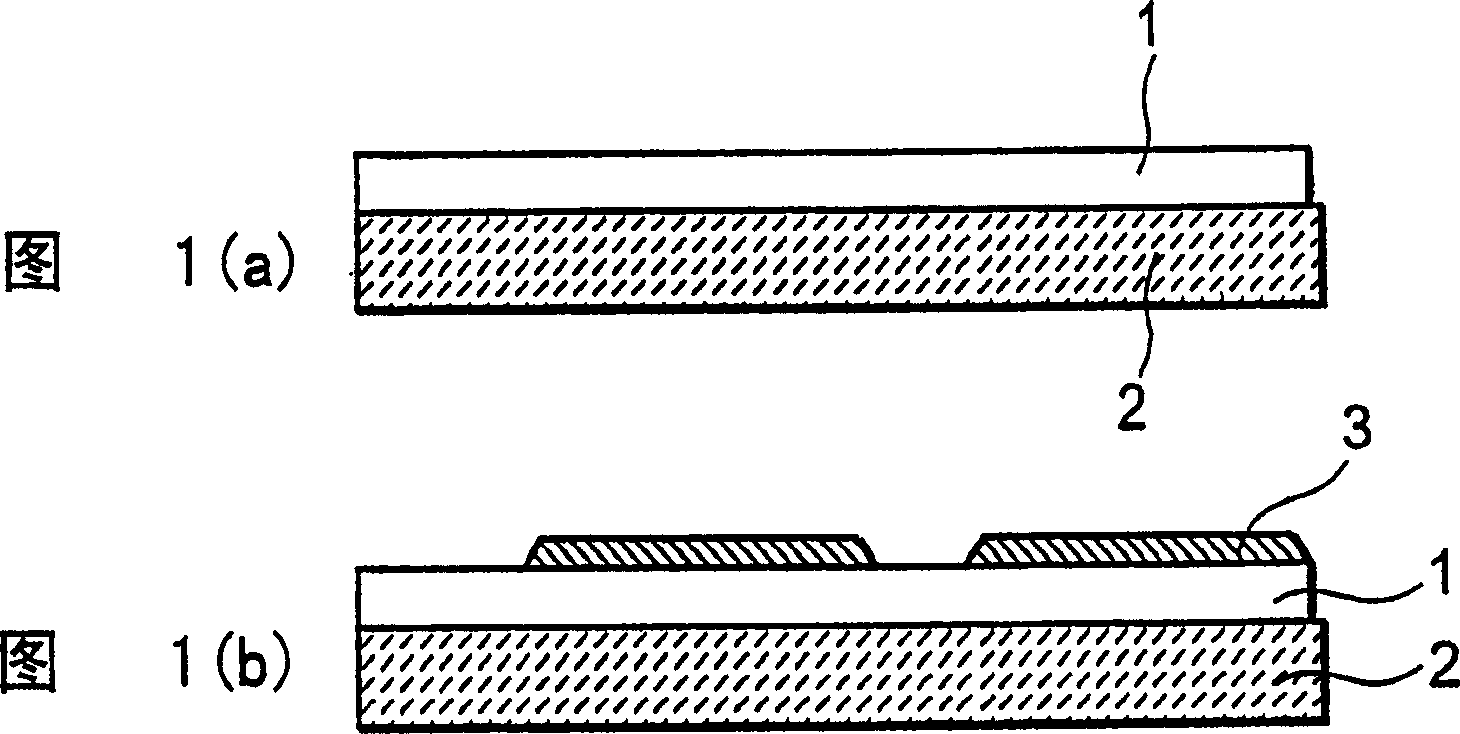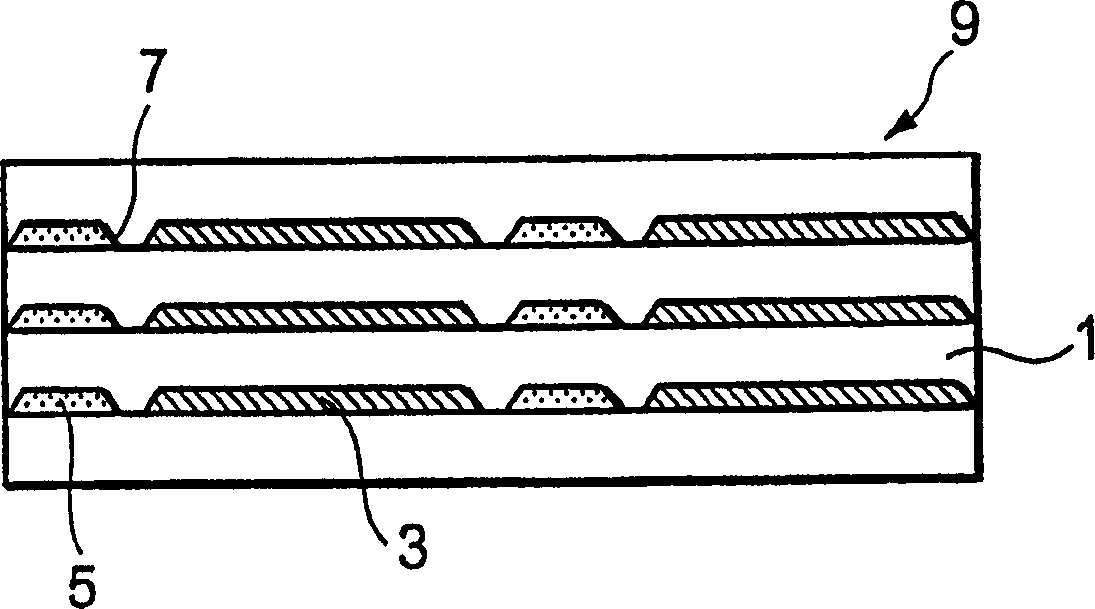Method of manufacturing ceramic laminate, laminated electronic element and method for producing same
A technology for laminated products and ceramics, applied in the manufacture of electrical components, laminated capacitors, multilayer circuits, etc., can solve problems such as weak connection strength and cracks, prevent delamination and cracks, improve adhesion, and inhibit deformation Effect
- Summary
- Abstract
- Description
- Claims
- Application Information
AI Technical Summary
Problems solved by technology
Method used
Image
Examples
Embodiment 1
[0245] A laminated ceramic capacitor (a ceramic laminated product) was manufactured as follows.
[0246] To include 99.5mol% BaTiO 3 and 0.5 mol% MnO in 100 mol parts of the composition by adding 0.5 mol parts of Y 2 o 3 and 0.5 molar parts of MgO. To 100 parts by weight of this ceramic component was added 55% by weight of an excipient comprising 5.5% by weight of ethyl cellulose and 94.5% by weight of petroleum ethanol. The mixture was kneaded using a three-roll mill to prepare a ceramic slurry, which was then applied to a belt-shaped polyester carrier film by a die coater method to prepare a ceramic green sheet.
[0247] A conductive paste was prepared by kneading 45% by weight of nickel powder with a particle size of 0.2 μm and 55% by weight of excipients (including 5.5% by weight of ethyl cellulose and 94.5% by weight of petroleum ethanol) using a three-roll mill .
[0248] By pulverizing part of the above ceramic slurry until BaTiO 3 The particle size is 0.5 μm to pre...
Embodiment 2
[0270] Multilayer ceramic capacitors were fabricated by the method described below.
[0271] To include 99.5mol% BaTiO 3 and 0.5 mol% MnO to the composition of 100 mol parts by adding 0.5 mol parts of Y 2 o 3 and 0.5 molar parts of MgO. To 100 parts by weight of this ceramic component was added 55 parts by weight of an excipient comprising 5.5 percent by weight of polyvinyl butyral, 1.7 percent by weight of a plasticizer and 92.8 percent by weight of petroleum ethanol. The mixture was kneaded using a ball mill to prepare a ceramic slurry, which was then applied to a belt-shaped polyester carrier film by a die coater method to prepare a ceramic green sheet. The thickness of the ceramic green sheet was adjusted to about 2.5 microns.
[0272] A conductive powder was prepared by kneading 45% by weight of nickel powder with an average particle size of 0.2 microns and 55% by weight of excipients including 5.5% by weight of ethyl cellulose and 94.5% by weight of petroleum ethano...
Embodiment 3
[0299] Multilayer ceramic capacitors were fabricated by the method described below.
[0300] To 100 mole parts of the composition (comprising 99.5 mole % of BaTiO 3 and 0.5 mol% of MnO) adding 0.5 mol% of Y 2 o 3 and 0.5 mol% of MgO, and further adding glass powder with a certain softening point therein according to the amount shown in Table 3 to prepare a dielectric ceramic slurry. A dielectric ceramic green sheet having a thickness of 3 µm was prepared by applying the dielectric ceramic slurry to a tape-shaped polyester support film by a die coater method.
[0301] Because the particle size of the dielectric powder is affected by a large amount of BaTiO 3 Dominated by powder, so its average particle size is BaTiO 3 the average particle size.
[0302] Here, the dielectric powder used in the dielectric green sheet has an average particle diameter of about 0.4 microns, and the glass powder has an average particle diameter of about 0.7 microns and a softening point of 680°C...
PUM
| Property | Measurement | Unit |
|---|---|---|
| thickness | aaaaa | aaaaa |
| thickness | aaaaa | aaaaa |
| thickness | aaaaa | aaaaa |
Abstract
Description
Claims
Application Information
 Login to View More
Login to View More - R&D
- Intellectual Property
- Life Sciences
- Materials
- Tech Scout
- Unparalleled Data Quality
- Higher Quality Content
- 60% Fewer Hallucinations
Browse by: Latest US Patents, China's latest patents, Technical Efficacy Thesaurus, Application Domain, Technology Topic, Popular Technical Reports.
© 2025 PatSnap. All rights reserved.Legal|Privacy policy|Modern Slavery Act Transparency Statement|Sitemap|About US| Contact US: help@patsnap.com



